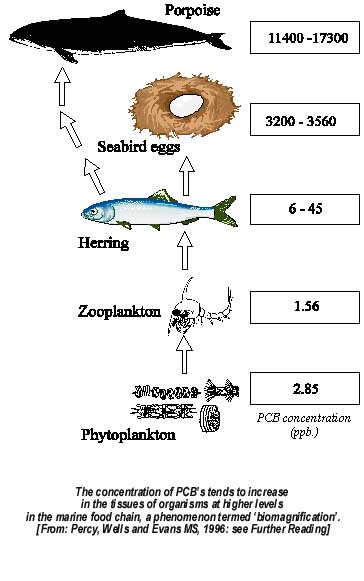I'd heard a few things about it, but didn't know much, so I thought I'd look into it. Turns out that it may or may not be the size of two Texases, as no one's got an official measure, but it sounds huge. And deadly.
The Earth, as some of you may know, is round, and spinning. Because of factors such as solar heating, the shape of land masses and the inertia of water, several large, perpetual currents exist in our oceans, and their existence has a strong influence on things such as weather, water temperature, migratory routes, and human trade and military activity.

(http://blue.utb.edu/paullgj/geog3333/lectures/oceancurrents-1.gif)
As you can see, what's created are essentially giant eddies, circular water flows with relatively stationary centers. One in particular is the North Pacific Subtropical Gyre (we'll call it the NPSG), with an area of approximately 10 million square miles.
The currents of the ocean can have a profound effect on the atmosphere above, as the temperature and flow of water can affect ambient air temperature, humidity, wind, and precipitation. The NPSG is no exception. The center of this gyre is also known as the "horse latitudes," because shipping vessels hundreds of years ago would run into dead air and wouldn't be able to fill their sails. After weeks sitting in the same place, they would end up dumping their livestock, including horses, into the water, in an attempt to lighten the load and move along. Must've been good eats for the sharks.
(Edit: Another, more verifiable etymology for the name "horse latitudes" is from an old tradition of throwing a straw-stuffed effigy of a horse off the side of the ship in celebration of a sailor's having worked off a debt to the ship's paymaster. Since these debts were frequently worked off halfway across the ocean, this became the place for the practice. How interesting that the practice of dumping things in the middle of the ocean continues to this day...)
Turns out, the same current and weather patterns that trapped ships long ago is now having the same effect on human wastes. Over the last few decades, a giant mass has been accumulating at the center of this vortex, composed of trash generated by oceangoing ships, runoff from terrestrial storms, broken fishing nets, and lost cargo from big storms. One of the most dangerous components of this flotilla of flotsam is the large amount of plastic.
Plastics, including polyethylene and polypropylene, are synthetic polymers that have remarkable strength, flexibility, and durability. They're used extensively in every aspect of modern civilization, from cars to medical devices to naughty toys. It is their durability, however, that causes the problem.
Instead of being biodegradable, plastics are photodegradable. This means that instead of being broken down by biotic processes such as bacteria, they are broken down by exposure to light, particularly from the sun. The other critical difference is that, where biodegradable substances are returned to the life cycle in the form of natural chemicals, photodegradable plastics are just broken down into smaller and smaller pieces, creating a large volume of molecular-sized synthetic polymers.
One of the chemical properties of these polymers is that they absorb and give off different chemicals, some of which are nonylphenols, PCBs, and the infamous DDT. When plastic in the ocean is eaten by living organisms, the toxic chemicals within are released into that organism. In phytoplankton, toxic chemicals are consumed and then passed long the food chain up to higher trophic levels, and the concentration of these chemicals increases exponentially at each level, in a process called biomagnification.

(http://www.bofep.org/Publications/Fundy%20issues/biomagnification.jpg)
Following the diagram above, replace the porpoise with a person, and consider how people are truly integrated in the global ecosystem.
The amplification of these toxins can have profound effects on higher organisms. In the case of DDT, the accumulation in birds makes their shells weaker, and so, when attempting to incubate their prospective young, the parent birds inadvertently crush the eggs, destroying any hope of a subsequent generation.
Also perilous for those birds, such as this late albatross, small plastic objects look like food, but lack the same nutrients:

(http://www.tripdance.org/IMAGES%20Web/Poisoning%20the%20Well/Sea-Plastic-LN-PG5oct05a.jpg)
Due to the nature of its currents, the NPSG has been collecting and consolidating in its center vast quantities of these non-biodegradable plastics, which in turn have been able to amass and release large amounts of toxic substances into the oceans and the food web. Scientists have named this area "The Great Pacific Garbage Patch," and have been researching it with greater interest. With time, we'll be able to figure out exactly how big it is, and hopefully figure out a way to clean it up.
But is it an island? As it turns out, no. It's actually worse than that. Instead of being a giant floating island of plastic trash, the center of the NPSG is actually more like a dilute soup of plastic pieces big and small, intermixed with all of the living phytoplankton and zooplankton. This makes it that much more difficult for plankton-grazers to get nutritious food without picking up little pieces of plastic. It also means that it's that much more difficult for us to figure out how to get the plastic out of the ocean without taking out tons of marine life as well.
One of the best resources on all of this is the Algalita Marine Research Foundation. Here is a series of Plastics in the Enviroment (PDF) handouts that details this stuff in an easy-to-read format. There, you can also check out the Action sheet on plastics (PDF) and What you can do about plastic pollution (PDF).
Let me know if you have any more questions or insight, I love feedback.
Paddy
[This post has been revisited and re-edited in light of new understanding and research, so as to be as factually accurate as possible. PH 11/7/11]